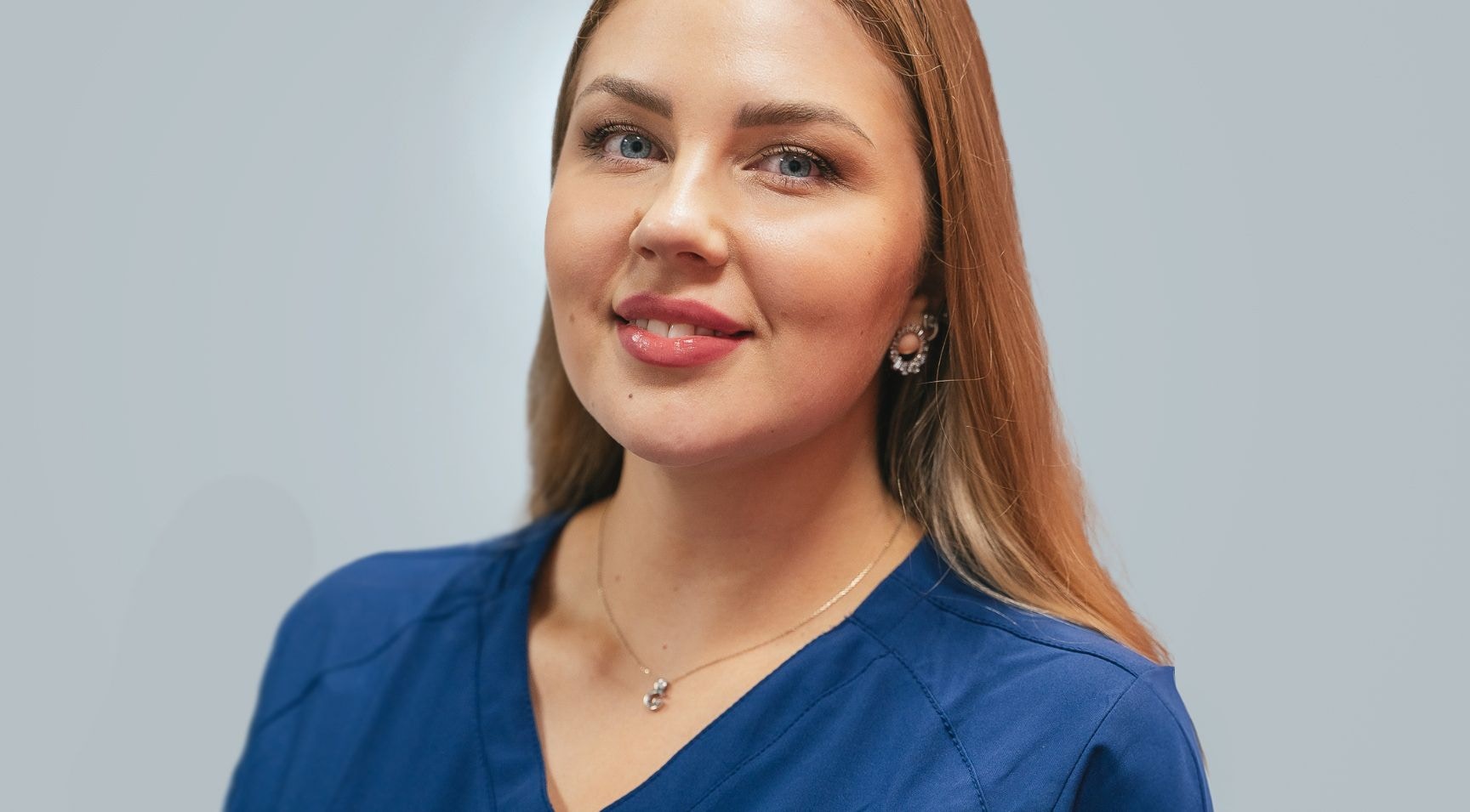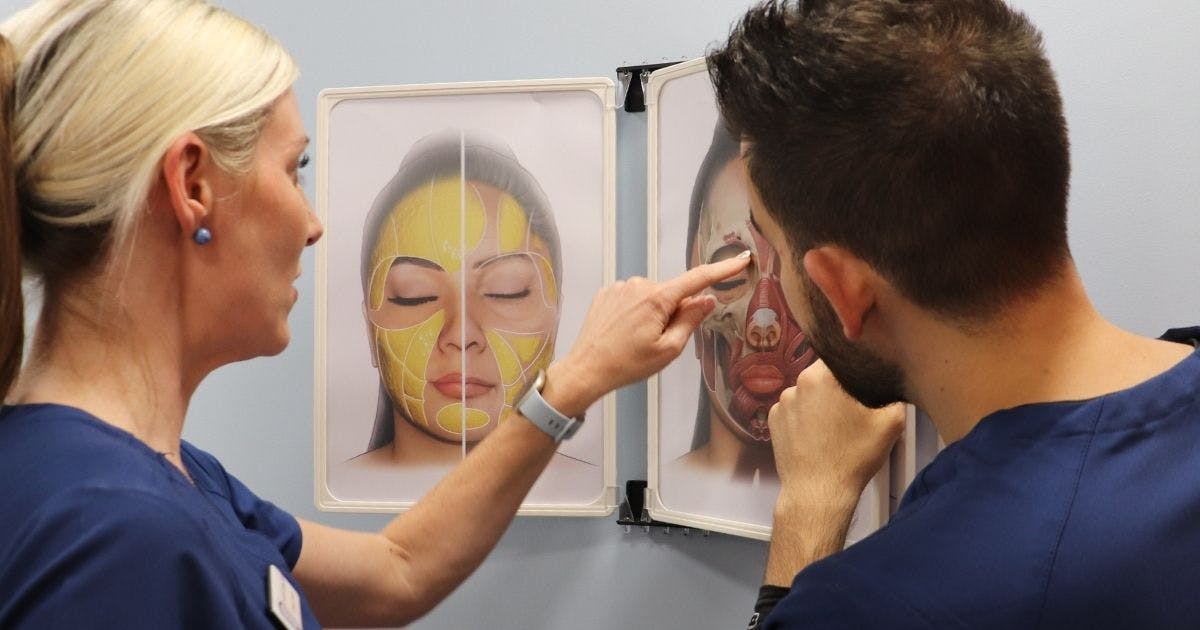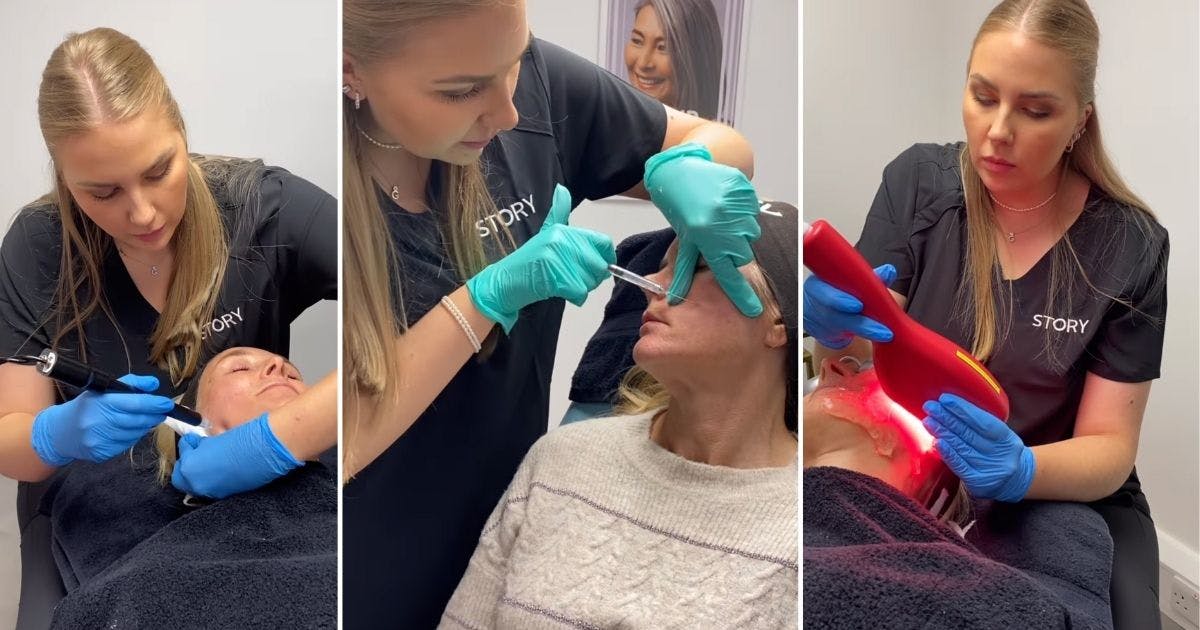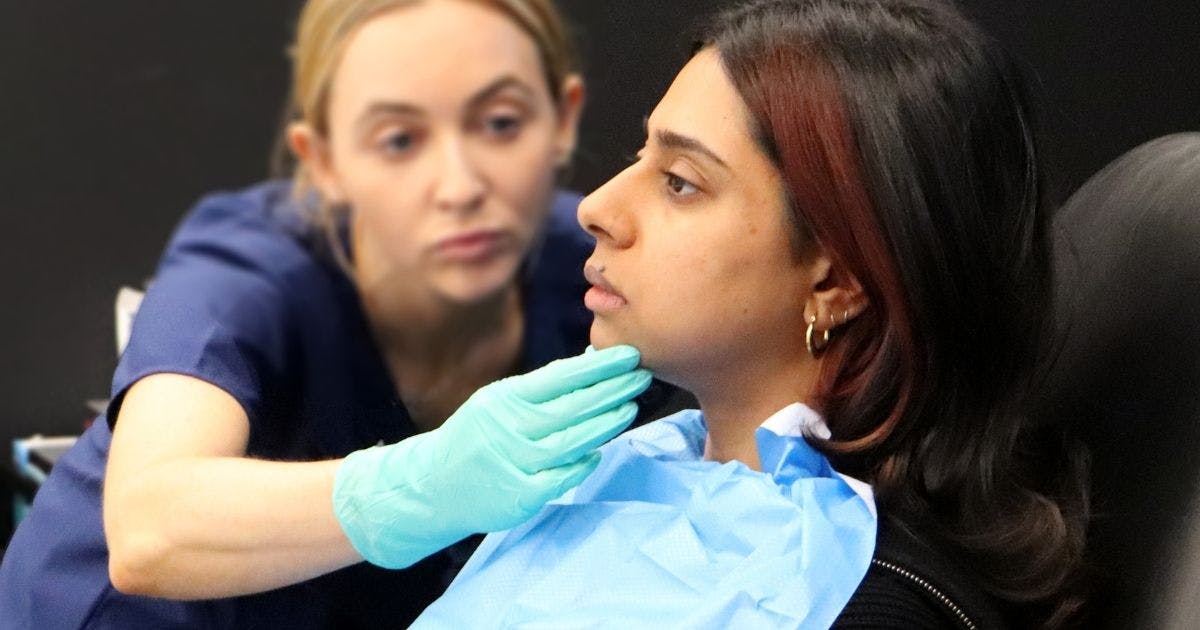Dentists Starting in Aesthetics: The Challenges

The transition may be easier than for most medical professionals, but dentists starting in aesthetics still face challenges.
Cosmetic dentists are well-placed to incorporate aesthetics treatments into their practice, as they already have an existing patient base.
1. Injectables can be an easy way to:
2. Introduce artistry and creativity into your career
3. Supplement your dentistry income
Broaden your skillset in a competitive market.
Here are some of the obstacles dentists may encounter when starting in aesthetics and how to tackle them.
Our clinical trainer, dentist and medical aesthetics specialist, Laura Geige also shares her tips. She delves into how she transitioned from dentistry to aesthetic medicine and what she learned along the way.

The biggest challenge for dentists in aesthetics is psychological
We asked Laura what the biggest challenge for her was, moving from cosmetic dentistry to aesthetics. She told us, “You need to have the courage to switch full-time – if that’s what you want to do.
“It can be difficult to jump into the unknown, especially when you have a stable job and position. For me, aesthetics was always very tempting!
“It’s scary to take the first step, but if you do it, you’ll look back and understand why it was worth it. I’ve never heard any other dentist say otherwise!”
Managing dentistry and a part-time career in aesthetic medicine
Trying to establish yourself in aesthetics while working part-time in dentistry may feel demanding.
Laura recalls her experience when she first started and how she used it to her advantage, “When I used to work part-time in dentistry and part-time in aesthetics, it was pretty simple.
“You can easily practise in your dental surgery and start to introduce bits about botox and filler during your patient consultations.” She urges new starters to “Talk about your training and your services openly! This will help you attract more aesthetics patients and it’s a great way to build your patient list.”
Laura notes, “The only risk in this is that you may start liking the medical aesthetics part of your career more. You may become tempted to leave dentistry – at least most of us do!”

What’s the best way to generate aesthetic patients as a dentist?
Laura recommends “utilising social media marketing to increase awareness of your aesthetics clinic and grow your client database.”
Instagram is an efficient and cost-effective tool to grow your business. You can use services such as paid advertising, testimonials and before and after posts to showcase your skills and services.
“Word of mouth is a great way to expand your patient list”, Laura continues. By offering great service and treatments to your existing aesthetics patients, you can count on them to spread the good word and recommend you to friends and family.”
Aesthetics career paths for cosmetic dentists
Choosing the right career path for you, your cosmetic dentistry skills and your goals is crucial. Depending on what you’d like to practise, there are a few options available to you.
1: You can add injectable treatments to your existing dental practice, capitalising on your existing patient base.
2: If you’re looking to pair treatments such as Smile Makeovers with injectables, set up your own specialist cosmetic dentistry practice.
3: As a dentist starting out in aesthetics, you may wish to make injectables your main focus. In this instance, you have the option of joining an established clinic solely as a medical aesthetics practitioner.
Find the right aesthetics clinic for you
If you decide that you want to fully transition to medical aesthetics but don’t want to start your own practice, you need to select the right employer. Picking the wrong clinic can be the difference between career growth and stagnancy.
“My best advice would be to trust your gut feeling” Laura states.
She continues that it’s important to “do your research, ask around as maybe one of your colleagues is familiar with that particular clinic. They might know a bit more about the internal structure and atmosphere.
“Also, read through your contract carefully, take your time, and don’t sign anything that you don’t feel comfortable with.
“Our medical aesthetics work is in the private sector, so you can have more flexibility with it. If there’s anything you’re unsure about, ask for further clarification or changes to the contract before you sign,” Laura explains.
She does, however, warn to proceed with caution. “As with any business, there are people that will try to take advantage so don’t rush to sign anything!”
“Ethics are a big thing for me and should be for every aesthetics injector. At the end of the day, you are responsible for your patients. Make sure you’re not pushed to do anything you aren’t comfortable with or are not trained for,” Laura clarifies.

Harness the motivation that kick-started your interest in aesthetics
It’s normal for motivation to dwindle at times, especially if you’re managing another job and commitments. Wherever you are in your aesthetic medicine journey, whether you:
- Are just starting your training
- Have graduated with your Level 7 Diploma in Botox & Dermal Fillers
- Are moving into full-time aesthetics practice
- Juggle working full-time or part-time alongside your dentistry.
Retaining inspiration at any level can be challenging. Laura recognises this and notes that “Motivation starts at the beginning of your training.
“I know it is scary at the start, but remember, everyone feels this way when they start something new.” This is especially the case if you’re building your customer base and appointments aren’t frequent yet. Think about what made you want to get into aesthetic medicine in the first place.
Laura emphasises the importance of “trusting yourself and your knowledge.”
Aesthetic courses for cosmetic dentists
Growing your skillset is a great way to increase your services, retain customers, supplement your income and bypass the competition. Furthermore, as a dentist, your transition to medical aesthetics will be an easy one. Dentists already possess much of the anatomical knowledge and have hands-on experience of injecting.
The Level 7 Diploma in Botox and Dermal Fillers is a postgraduate-level qualification. Training with Harley Academy ensures you obtain JCCP-approved and Ofqual-regulated credentials.
You’ll learn various techniques for injecting filler and botox, as well as how to prevent and manage complications. In each mentoring session, you’ll treat your own patients – no sharing - under the one-to-one supervision of an experienced clinical trainer. We even provide the patients for you!
Get started on your aesthetics journey today by booking a call with one of our knowledgeable Course Advisors.
All information correct at the time of publication
Download our full prospectus
Browse all our injectables, dermal fillers and cosmetic dermatology courses in one document
By submitting this form, you agree to receive marketing about our products, events, promotions and exclusive content. Consent is not a condition of purchase, and no purchase is necessary. Message frequency varies. View our Privacy Policy and Terms & Conditions
Attend our FREE open evening
If you're not sure which course is right for you, let us help
Join us online or in-person at our free open evening to learn more
Our Partners












STAY INFORMED
Sign up to receive industry news, careers advice, special offers and information on Harley Academy courses and services

